They say that India is an assault on the senses. For my first blog post, I thought I would share my first week in India with you through the sense of taste.
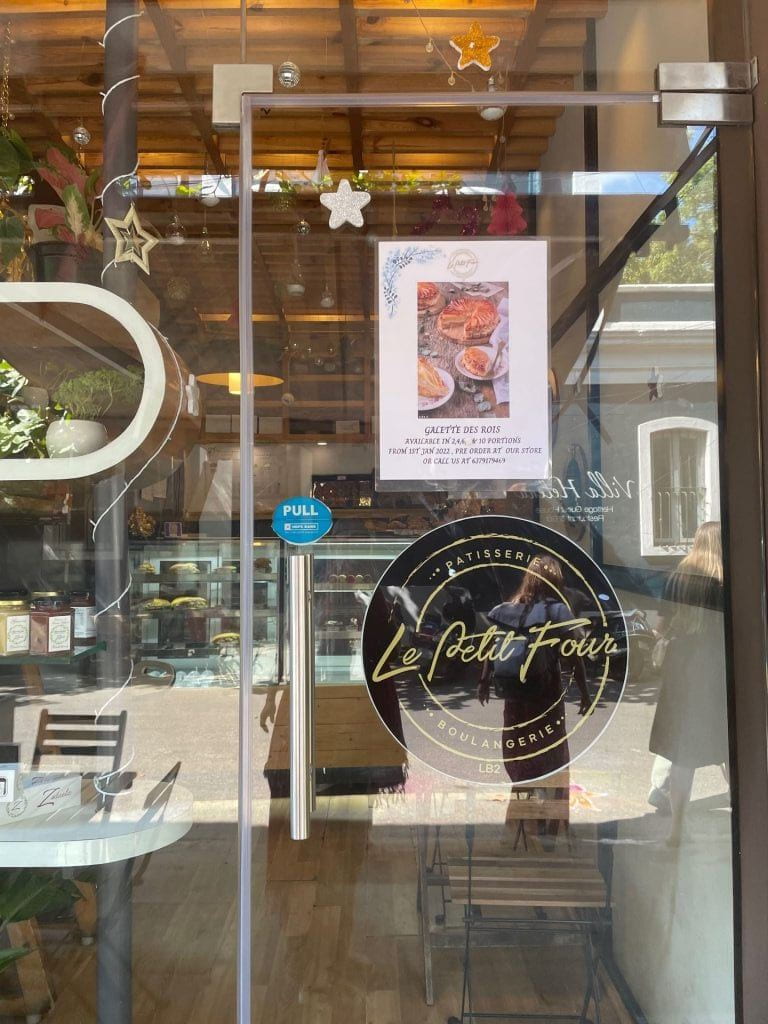
Our first destination was the city of Pondicherry, which was a French colonial settlement until the mid 20th century. Pondicherry actually remained a colony of France after India achieved independence from Britain. You can still see remnants of the French influence in the architecture and cuisine of the city, especially in the area called ‘White Town’. One shop was selling ‘Galette des Rois’ (cake of the kings) which is a very traditional French desert eaten annually on the 6th of January.
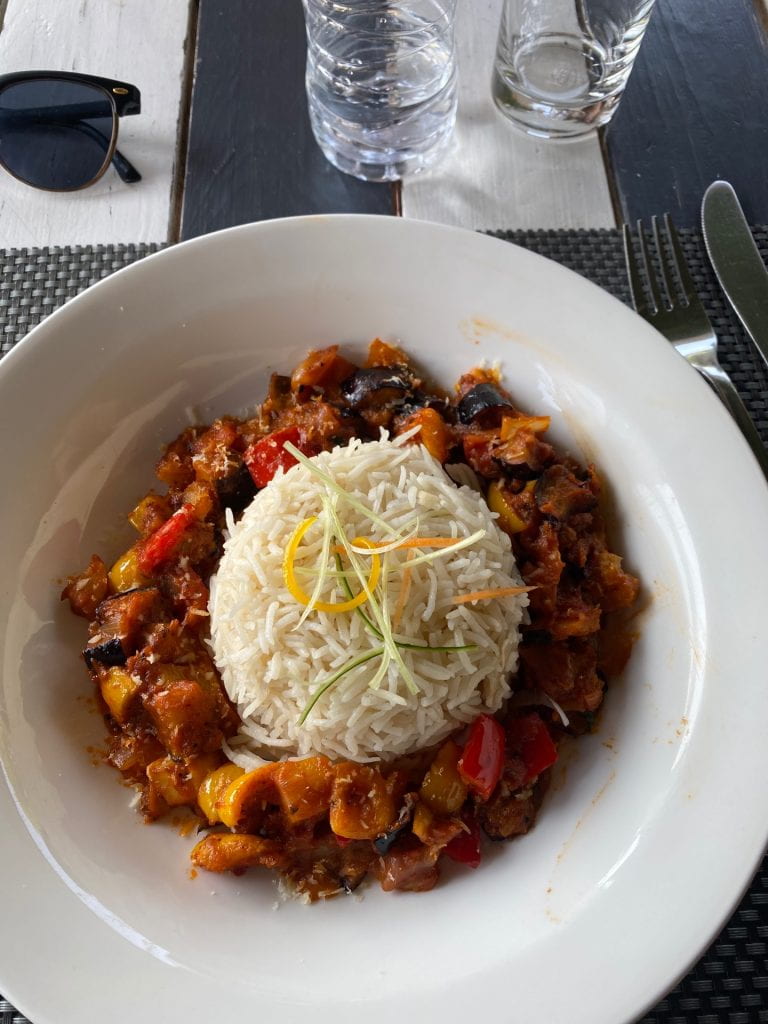
Some of the French food has been adapted to more local norms; for example, I had a ratatouille that was served around white rice, which I thought was rather non-traditional, but it tasted delicious.
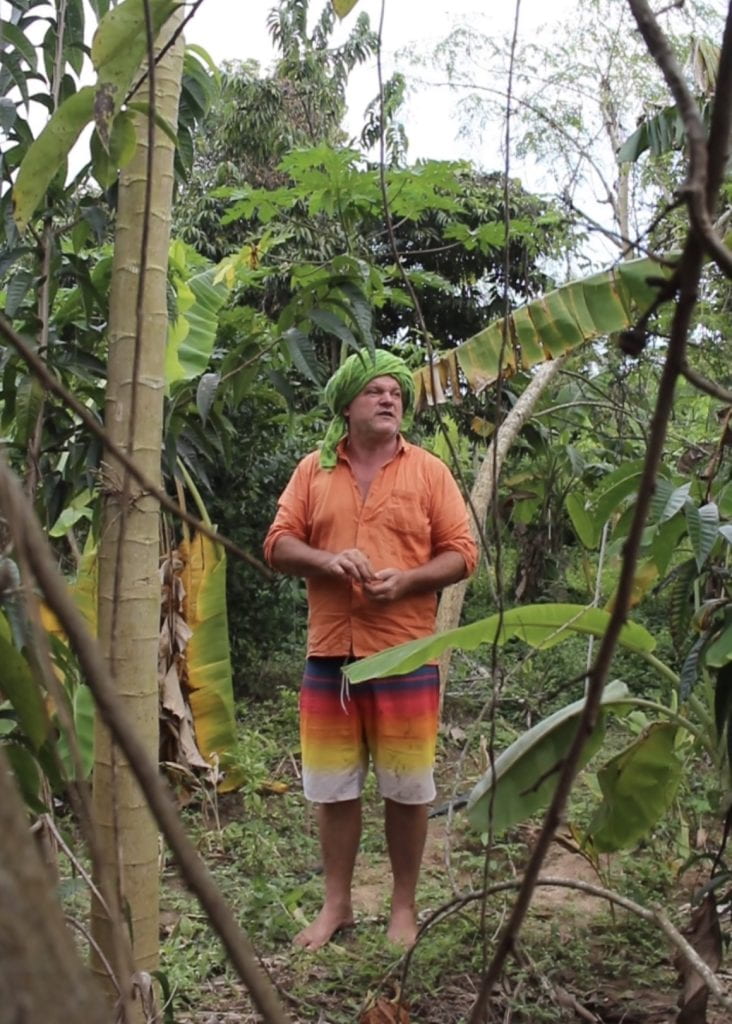
We then visited the intentional community of Auroville located just outside Pondicherry. It’s hard to describe Auroville, but it felt like a hippie commune born out of 1960s new wave spiritualism to me. We were invited on a tour of Auroville’s permaculture farm. I expected organised rows of planted fruit trees & vegetable patches but instead it was overgrown native bush that we tentatively walked through, avoiding the centipedes. Krishna, the man giving us the tour, believed that a crucial aspect of cultural reconnection is eating local and native plants. He picked weeds off the ground and gave them to us to eat, explaining that so much more flora is edible than we believe. He described the high nutritional and medicinal values of different South Indian plants and also emphasised the ecological cost of eating non-locally grown foods.
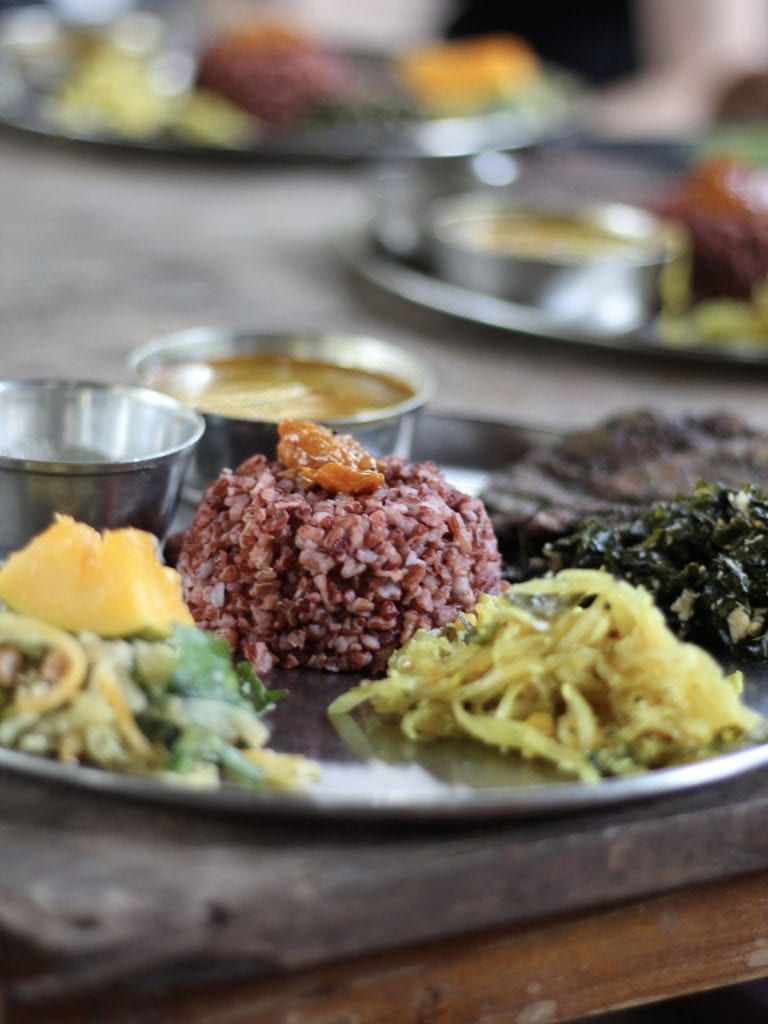
Krishna’s conversations made me consider my own diet in NZ, and I left his tour thinking about how I could implement more local New Zealand plants into my meals.
After the tour, we had lunch made fully from plants from the permaculture farm. The food was colourful and had an extremely earthy taste to it, like spinach or matcha powder.

The next day, at Auroville, we ate in their Solar Kitchen, where all the food is cooked using a gigantic Solar oven. We were served puréed mashed potatoes, butter chickpeas, rice, vege curry, poppadoms, and very sour Greek yoghurt.
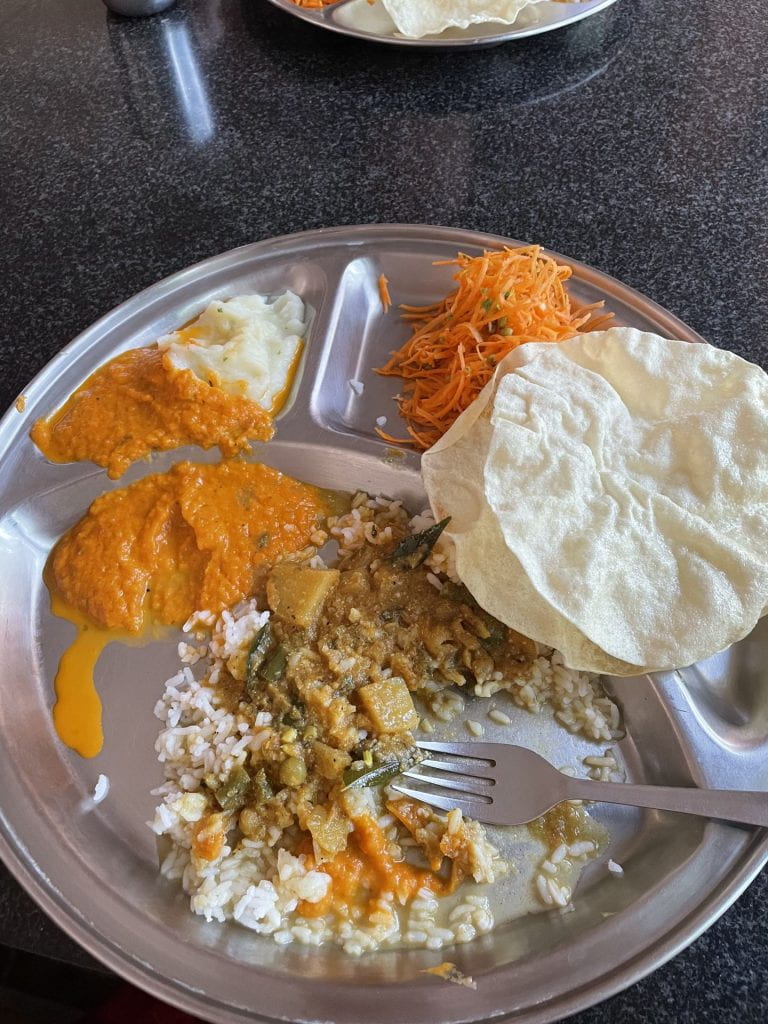
I’ve eaten twice this week at a chain restaurant called Surguru. The meals are super cheap by New Zealand standards, about $2-6 NZD per dish and $1.20 NZD for a drink. Both times I ordered vege fried rice and a sweet lime soda (…without ice ofc!).
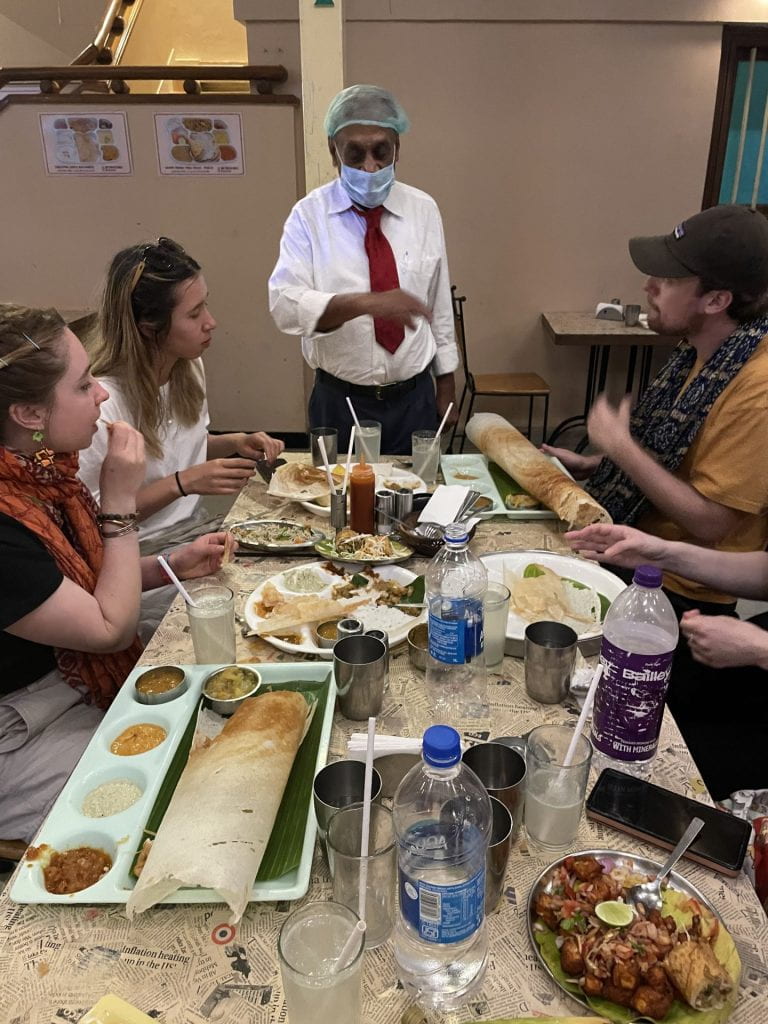
Towards the end of the week, we arrived at the Isha Yoga Foundation in Coimbatore. It’s an ashram of Sadhguru, and the people there worship Shiva, god of destruction and creator of Yoga.
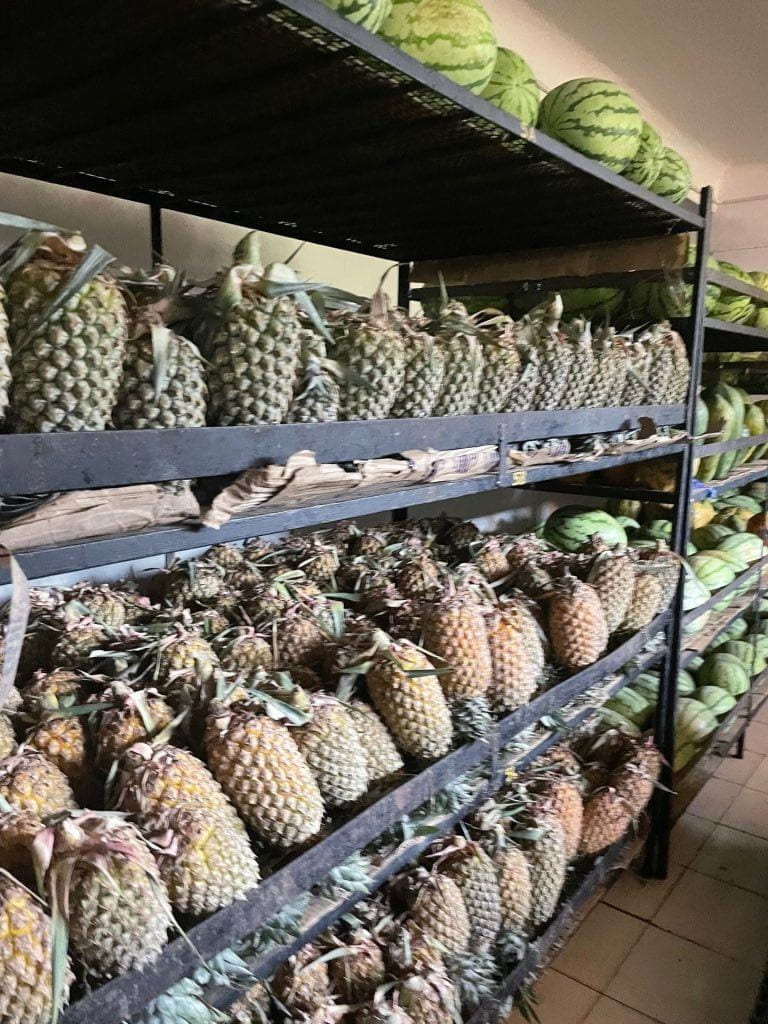
The style of dining at Isha was completely new for me. We ate every meal in silence on the ground in a large hall. Food was served out of buckets by volunteers of the ashram. The hardest aspect to adjust to for me was eating with my hands, as I had never done that with Indian food before ,and it felt slightly unhygienic from the perspective of someone who’s always eaten with cutlery. During the first dinner, I struggled to get enough food into my hand, but I eventually figured out a good technique. The meals at the ashram follow a Sattvic (or yoga) diet, which is a food group from the Ayurvedic medicine system. None of the meals we ate had any garlic, onion or salt, but they were still very flavourful. Nothing I ate made my stomach bloat either, which was a relief as I have IBS and was worried before the trip about how I would cope with Indian cuisine. Similar to the meals at Auroville, I didn’t know all the types of fruits and vegetables on my plate. It was fun tasting new textures, flavours and spices 🙂
I work part-time as a barista, so I was very much looking forward to trying Indian hot drinks. Tea and coffee in India are usually made in large pots with milk already added to the pot. The milk tends to burn and leave a darker film over the liquid, which I don’t like the taste of. The chai here, however, is amazing; it is sweet and spicy with a real depth of flavour compared to chai lattés in NZ.
